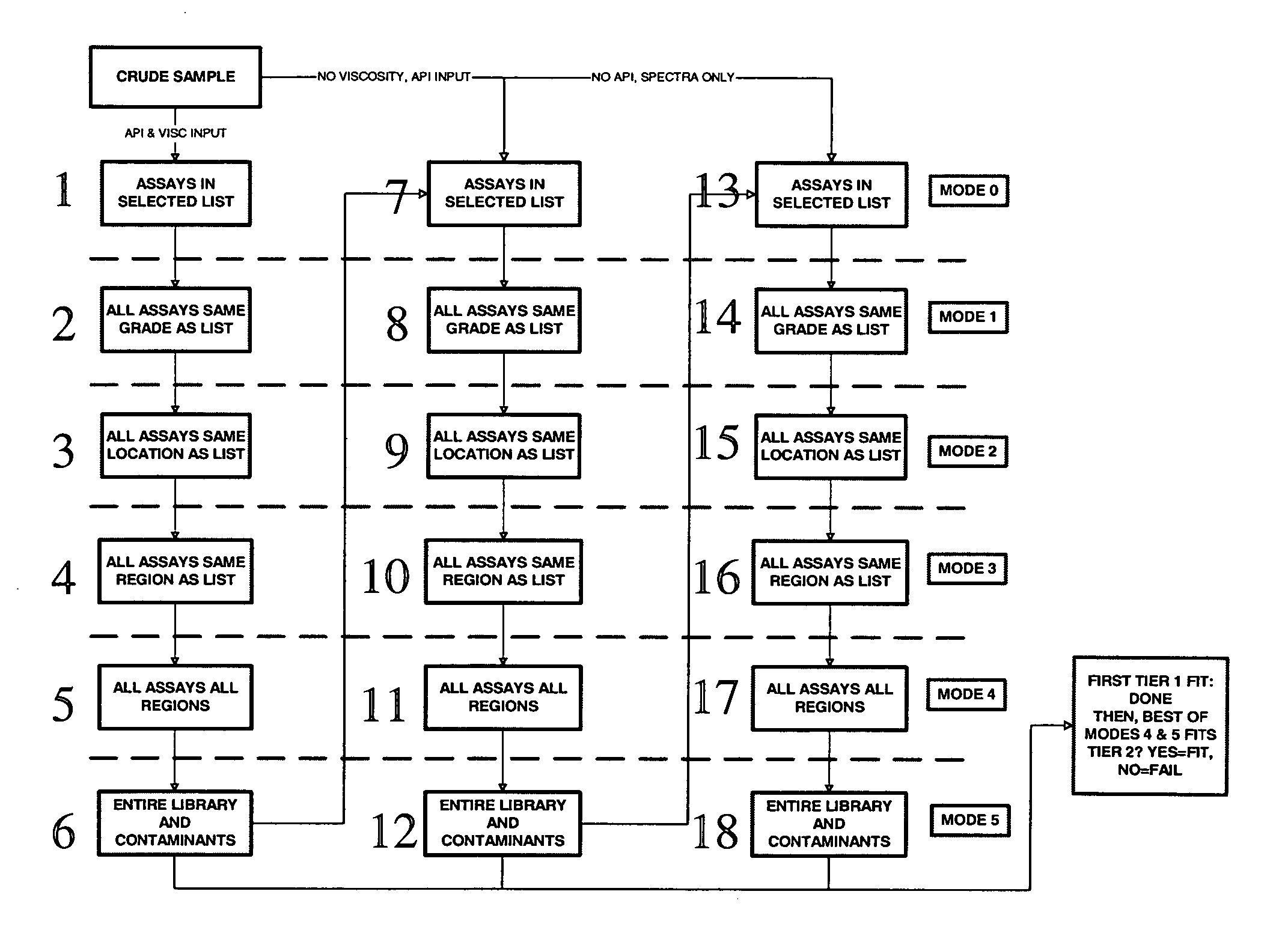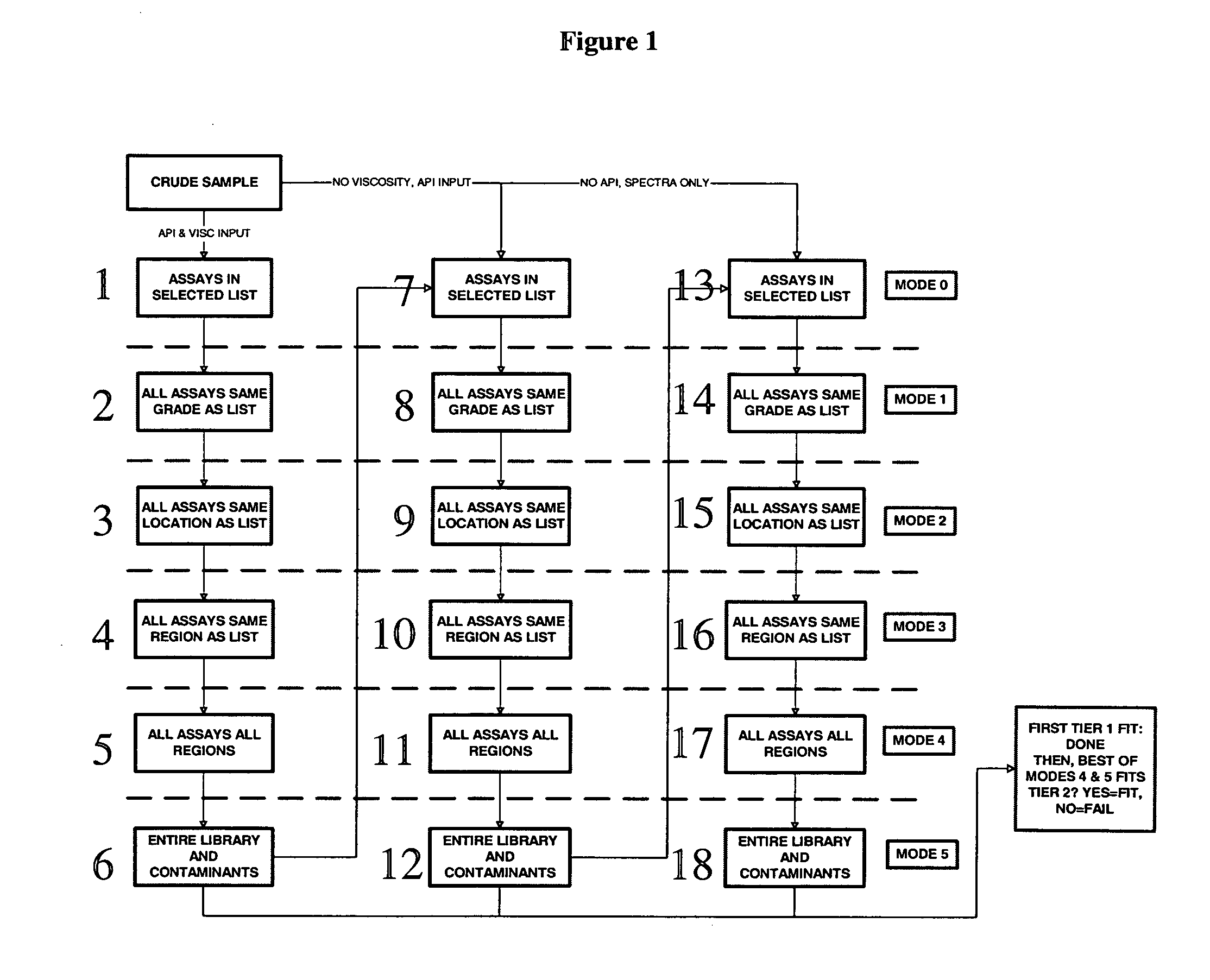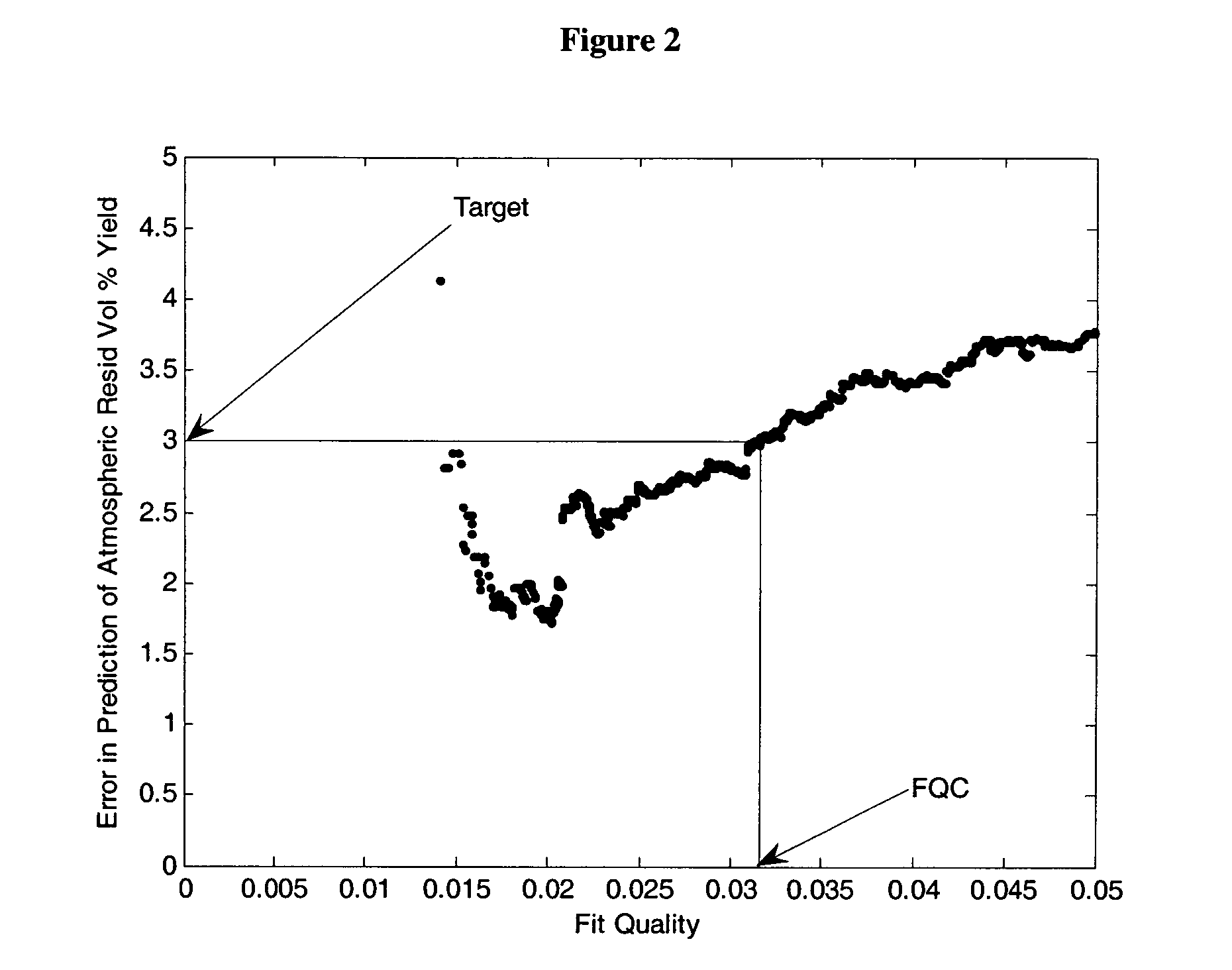Method for analyzing an unknown material as a blend of known materials calculated so as to match certain analytical data and predicting properties of the unknown based on the calculated blend
a technology of unknown materials and blends, applied in chemical methods analysis, material analysis, instruments, etc., can solve the problem that u.s. patent no. 6,662,116 b2 does not provide a means of estimating the uncertainty of predicted properties, and achieves the effect of increasing the flexibility with which the invention can be applied and increasing the compatibility of the invention
- Summary
- Abstract
- Description
- Claims
- Application Information
AI Technical Summary
Benefits of technology
Problems solved by technology
Method used
Image
Examples
example 1
[0154] Example 1 uses the method of U.S. Pat. No. 6,662,116 B2 with separate tolerances for the fit to the FT-IR spectrum, and the API Gravity and viscosity inspection inputs.
[0155] A Virtual Assay library was generated using FT-IR spectra of 562 crude oils, condensates and atmospheric resids, and 10 acetone contaminant spectra. Spectra were collected at 2 cm−1 resolution. Samples were maintained at 65° C. during the measurement. Data in the 4685.2-3450.0, 2238.0-1549.5 and 1340.3-1045.2 cm−1 spectral regions were used in the analysis. The spectra are orthogonalized to polynomials in each spectral region to eliminate baseline effects. Five polynomial terms (quartic) are used in the upper spectral region, and 4 polynomial terms (cubic) in the lower two spectral regions. The spectra are also orthogonalized to water difference spectra that are smoothed to minimize introduction of spectral noise, and to water vapor spectra. These corrections minimize the sensitivity of the analysis to ...
example 2
[0159] For Example 2, the same data as was used in Example 1 is again used, but in this case the method of the current invention is employed to balance the relative prediction power of analyses made using different inspection inputs. Future, analyses are conducted using the Grade / Location / Region / All Crudes iteration scheme.
[0160] For the analysis using FT-IR only, the FQC is set such that the error (t·SECV) in the prediction of the atmospheric resid yield is approximately 3 volume percent. A “same grade” cross-validation analysis is conducted limiting the references used to crudes of the same grade as the crude left out for analysis. 312 crudes in the library can be analyzed in this fashion. A “same location” cross-validation analysis is repeated using crudes from the same location as the crude that is left out as references. 545 of the crudes in the library can be analyzed in this fashion. The cross-validation is repeated using crudes from the “same region” as the crude left out (...
example 3
[0166] The same data used in Examples 1 and 2 are analyzed using only FT-IR. In one case, the method of U.S. Pat. No. 6,662,116 B2 is used. In the second case, the method of the current invention is used. Cross-validation analyses are done using references of the “same grade” as the crude being analyzed, using references of the “same location”, using references of the “same region” and using “all crudes”. For the analyses conducted using the method of U.S. Pat. No. 6,662,116 B2, a R2 tolerance is set to 0.99963. For each set of cross-validation analyses, fits for which R2 is greater than or equal to this tolerance value are collected, and used to calculate prediction errors for yields and assay properties. For the cross-validation analyses conducted using the method of the current invention, a FQC value of 0.031677 is used to define Tier 1 analyses, the results for these Tier 1 analyses are collected, and used to calculate prediction errors for these same yields and assay properties...
PUM
 Login to View More
Login to View More Abstract
Description
Claims
Application Information
 Login to View More
Login to View More - R&D
- Intellectual Property
- Life Sciences
- Materials
- Tech Scout
- Unparalleled Data Quality
- Higher Quality Content
- 60% Fewer Hallucinations
Browse by: Latest US Patents, China's latest patents, Technical Efficacy Thesaurus, Application Domain, Technology Topic, Popular Technical Reports.
© 2025 PatSnap. All rights reserved.Legal|Privacy policy|Modern Slavery Act Transparency Statement|Sitemap|About US| Contact US: help@patsnap.com



